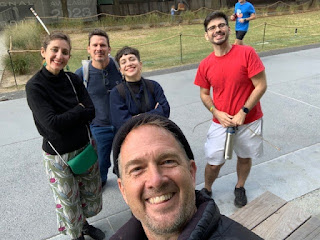This Week's Tour...
...met at 9:00AM Saturday on the Beltline Eastside Trail near Parish (R.I.P...soon to reopen as "Painted Park"!). We walked for 1 1/2 hours, covering 1 mile of the Beltline, ending at Ponce City Market.
"The Tourists"...
...je voudrais crier a mes nouveaux amis! 3 voyageurs impressionnants de Marseille and an awesome Atlanta-based orchestra teacher!
Map of the week...
..Trees Atlanta inventory map!
Trees Atlanta has planted over 150,000 trees in Atlanta...and they are ALL mapped here! Take a look...it is pretty cool and a great learning resource.
Tree of the week...
...singling out one of the hundreds of specimens from the dozens of collections along the arboretum.
Hands down, the shrub that elicited the most chatter during our talk was the sumac found on "Succession Hill" next to Freedom Parkway and along the eastside of the trail as one approaches Ralph McGill. My new french besties were quick to point out that they use sumac as an acidic flavoring in cooking, especially in Middle Eastern and Mediterranean cuisines. I'm not advocating it, but it is certainly worth looking into!
"Made from the coarsely ground berries of a variety of sumac bush, it's used as much for its bright color and presentation as it is for its flavor, which is often described as slightly salty, tart citrus."
"Stump" of the week...
...featuring a question raised during the tour that Jeff couldn't answer.





No comments:
Post a Comment